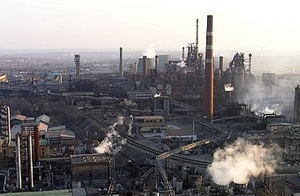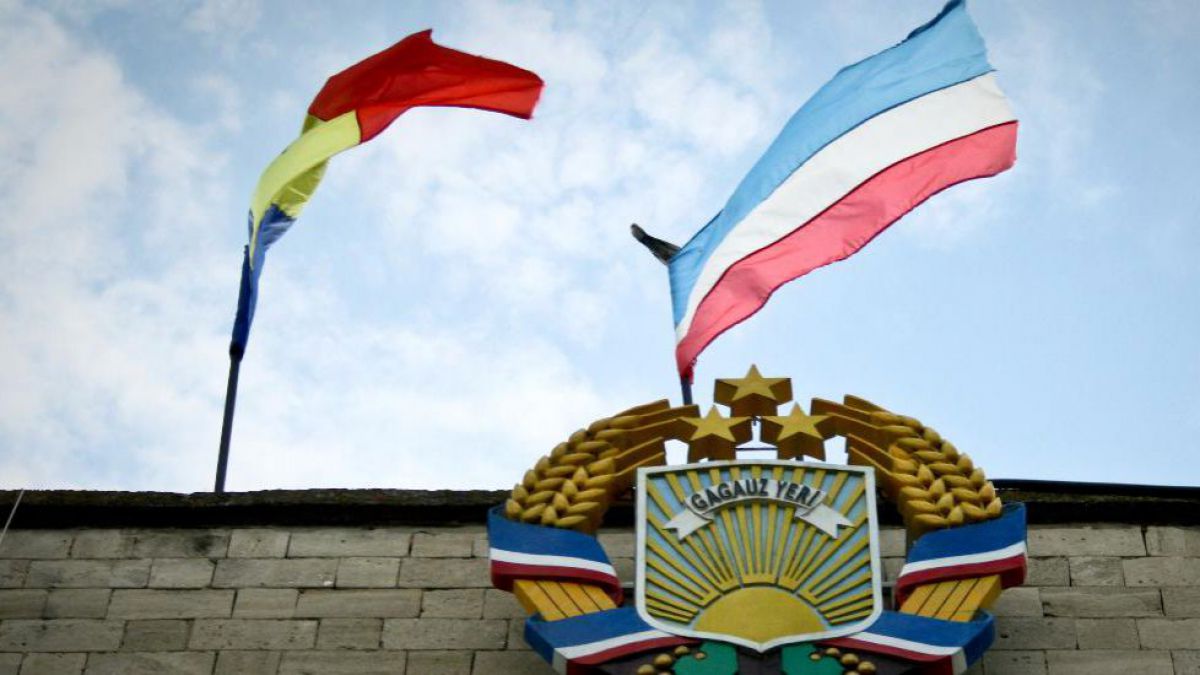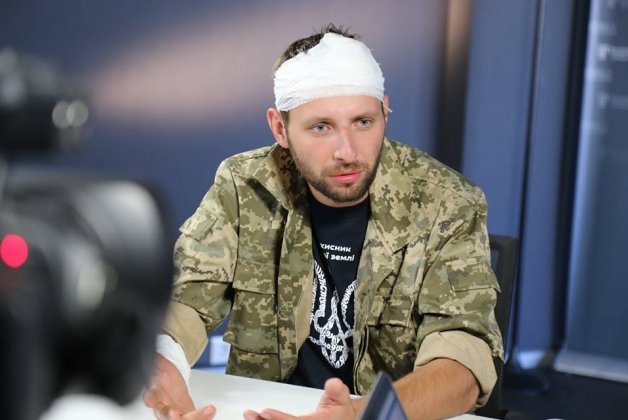One of the “horror stories” that has been force-fed to the eastern Ukrainians in the oblasts bordering Russia is the threat of catastrophic consequences for associating with the EU.
They say that their industry is fully dependent on export to Russia, and the opening of EU markets will not help at all, since nobody needs their goods in the West. It seems these fears are over-inflated.
Let’s examine Donetsk oblast, for example. It is the leader (in nominal volume) of export to Russia. Almost one-fifth of the overall export from Ukraine to the Russian Federation comes from here.
However, Donetsk oblast is an important partner for many countries, and not just for Russia. The volume of goods that are supplied to the Russian market constitutes only 6% of the overall volume of the oblast’s production. In other words, 94% is exported to other countries of the world or is consumed in Ukraine.
Out of all the oblasts, the ones most oriented toward the Russian market are the Luhansk and Zaporizhya oblasts, whose export supplies to this market constitute 10% of the production for each. Third place is taken by Mykolayiv (9%), fourth – Sumy (8%). Donetsk only has sixth place, coming in after Poltava.
Kharkiv oblast, which is also traditionally viewed as one of the most dependent on the Russian market, only exports 4% to the Russian Federation of its own production, just like Ivano-Frankivsk and Zakarpattya oblast.
If, in the case of Donetsk, the relatively low level of vulnerability is explained by diversification of export, orientation toward the internal market mostly is characteristic of Kharkiv. Only 9% of the regional production is exported, which limits the influence of export shocks.
Therefore, though eastern oblasts have a relatively higher vulnerability to shocks that have to do with export to the Russian market, these numbers can be easily compared with the numbers of the western oblasts.
Besides, the level of dependence of the Donbas oblasts’ economy on export to Russia is not catastrophic. Losses from breaking ties with the internal Ukrainian market might be much bigger.
Industrial dependence is higher.
The analysis of the export/production ration proved that the most vulnerable is mechanical engineering. This sector supplies almost one fourth of its production to Russia thanks to the combination of two factors: a significant export orientation and a high level of concentration particularly on the Russian market.
The risks are lower for the rest of the industries.
For example, only 15% of metallurgy and 9% of chemical industry goods are supplied to Russia. And the dependence of the food industry on the Russian market is simply tiny – only 3% of produce are exported to Russia. Of course, the potential loss of the market is not good news for any of the industries, but we should not overestimate the risks, either.
Let us return to mechanical engineering. Ukrainian export of this industry to Russia is fantastically concentrated.
De-facto we can talk about the existence of several “monogoods” which Ukraine only supplies to Russia, and Russia only buys from Ukraine.
Such “monogoods” constitute about one-third of export. And for them the issue of reorienting to other foreign markets is the most complex.
First and foremost, this touches on railway equipment, locomotives and carriages, as well as their spare parts. Obviously the industrial ties in this sphere have been retained since the times of the Soviet Union. In the recent years Russia has been gradually developing its own production within the framework of a long-term strategy for import replacement, which created the risks of losing the market for the Ukrainian producers even before the current crisis.
For railway equipment production, the optimal option for development is the satisfaction of growing demand on the internal market. However, for this, the demand has to be solvent. The fiscal situation in the country is very complicated, therefore the hope here lies first and foremost on the infrastructural projects which are being executed either using international donor funds or within the framework of state-private business partnerships.
Another sector which had been closely tied to Russia in the economical aspect, is the production of military equipment and dual-use technologies. Crimea and the war in the east put an end to trade in this sphere. At the same time, there are no questions as to the necessity to develop and support a well-equipped Ukrainian army. Therefore an increase in internal demand has to be expected.
Out of the means aimed to battle the negative consequences that have to do with the loss of the Russian market, I will name a few.
First is active policies on the labor market.
Trending Now
It is important to admit that the task of the state is not the salvation of a certain business (better put, its owner), but the minimization of negative social consequences of the changes within the company, thanks to policies on the employment market.
These consequences can be beaten, thanks to providing help in finding a job, increasing qualifications or re-qualifying the workers. Also, the issue of stimulating internal migration has to be engaged more actively, which has to do with the development of the real estate market and the simplification of the process of receiving social services.
Second is the creation of new opportunities at the internal market thanks to reforms, which may significantly improve the business climate within the country. They include the anti corruption law package and de-regulation, as well as the reform of tax administration, the decrease of the social tax and many other important initiatives which are being actively discussed but, alas, slowly executed.
Third is an active, if not aggressive, policy of finding new export opportunities and maximum use of already established connections and trade preferences. In this context it is important to actively use autonomous trade preferences of the EU, which are a prelude to the full-fledged free trade zone, which, I hope, will start working no later than November 1, 2014. Other important aspects of this policy are the simplification of the trade process, the encouragement of export, and new talks regarding the free trade zone with other countries.
Of course, this raises the issue of possible time lags. The risk of losing the Russian market is already relevant. The proposed steps demand time for execution, and without any guarantee of results. However, this claim would not be full if we don't remember that the risk of losing the Russian market is not new, either.
The volumes of export to Russia have been decreasing for three consecutive years. However, of course, in the recent time the fall has accelerated.
The problems with sporadic artificial barriers on the market are not news, either. For example, the food industry knows them so well, that they have been working actively for several years to improve the security and quality of their produce to access the European market, and therefore avoid the lack of certainty that have to do with supplies to the Russian market.
Russia did not state its policy of import replacement yesterday. There has been talk of it for over five years now. Of course, the execution of the announced intentions happened slower than they claimed. However, that is not a reason to ignore the statements when developing the long-term policies of a business. In 2012 Ukraine exported mechanical engineering goods to 160 world countries, including technologically developed countries, such as the US or European Union member states.
The EU is the biggest consumer for Ukrainian export of electronic equipment and apparatuses, and this category of goods takes up about one fifth of the overall machine engineering export.
This is why the potential to reorient the industry towards other markets does exist, without doubt. However, obviously not all countries will want to or be able to take advantage of it.
Let us return to the Donbas economy
Just like for the country as a whole, the main means to compensate for the losses at the Russian market is the search for new opportunities, new markets and new goods.
The new opportunities, for example, allow autonomous trade preferences from the EU, which have to grow into a full-fledged free trade zone. The new opportunities will also be created by reforms aimed to develop the internal Ukrainian market.
Help in finding new markets for the producers, and entering those markets, is a separate important point for the country’s trade policies.
Most important are new goods, which necessitate education and adequate innovation policies. Also important is the support for development of small and average businesses which more effectively adapt to newness.
[hr]Source: EuroPravda
Translated by Mariya Shcherbinina
Editing in Process by Lisa Spencer





